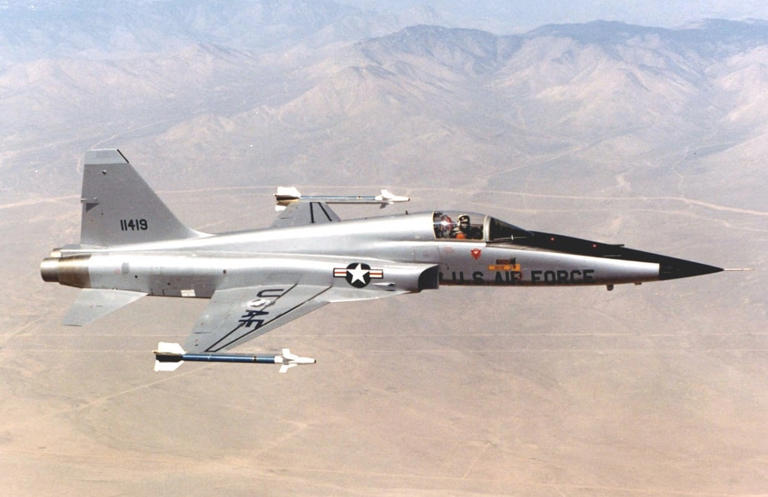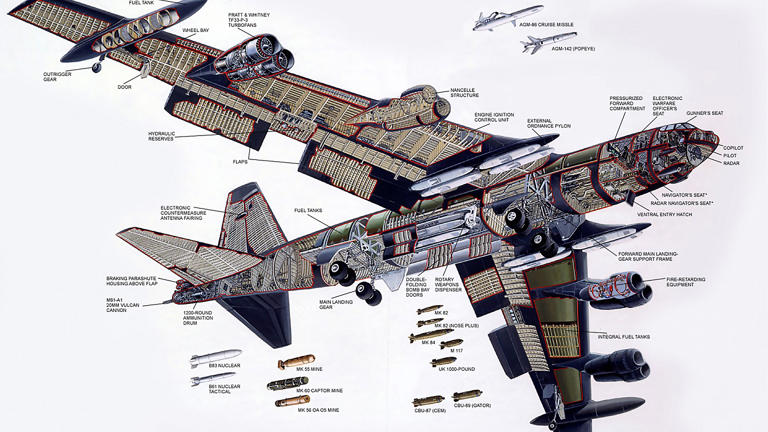Navigation
Install the app
How to install the app on iOS
Follow along with the video below to see how to install our site as a web app on your home screen.

Note: This feature currently requires accessing the site using the built-in Safari browser.
More options
You are using an out of date browser. It may not display this or other websites correctly.
You should upgrade or use an alternative browser.
You should upgrade or use an alternative browser.
Hanger Tails(Tales) ~ Flying/Aviation
- Thread starter Stryder50
- Start date
Stryder50
Platinum Member
- Thread starter
- #102
Flight Attendants Spill Their Secrets: 14 Things You Should Never Bring on a Plane, and What to Pack Instead
Take it from the pros: don't make these common packing mistakes.
:max_bytes(150000):strip_icc()/writers-flight-attendants-tout-8b162b81cbe94497b96d29dd7d32b9d2.jpg)
Flight Attendants Spill Their Secrets: 14 Things You Should Never Bring on a Plane, and What to Pack Instead
Don’t make the mistake of packing these 14 products that aren’t great for the plane. Instead, pack these travel essentials flight attendants and travel writers swear by. Shop them starting at $10 at Amazon, REI, and other online retailers.
Stryder50
Platinum Member
- Thread starter
- #103
Meet the Superfortress: The B-29 Bomber Changed Everything
...No Aircraft Combined as Many Technological Advances as the B-29 - During the Second World War, no aircraft combined as many technological advances as the Boeing B-29 Superfortress. The long-range, heavy bomber became the "big stick" in the final campaign of the war in the Pacific, and it was a B-29 that delivered the first atomic bomb that was detonated over Japan in August 1945.
...
...
Boeing B-29 Superfortress

...

...
Upgraded to ...
The Boeing B-50 Superfortress is an American strategic bomber. A post–World War II revision of the Boeing B-29 Superfortress, it was fitted with more powerful Pratt & Whitney R-4360 radial engines, stronger structure, a taller tail fin, and other improvements. It was the last piston-engined bomber built by Boeing for the United States Air Force, and was further refined into Boeing's final such design, the prototype B-54. Although not as well known as its direct predecessor, the B-50 was in USAF service for nearly 20 years.
After its primary service with Strategic Air Command (SAC) ended, B-50 airframes were modified into aerial tankers for Tactical Air Command (TAC) (KB-50) and as weather reconnaissance aircraft (WB-50) for the Air Weather Service. Both the tanker and hurricane hunter versions were retired in March 1965 due to metal fatigue and corrosion found in the wreckage of KB-50J, 48-065, which crashed on 14 October 1964.[1]
...
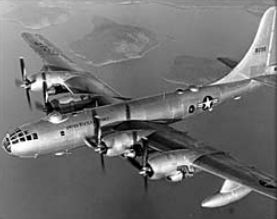
Boeing B-50 Superfortress - Wikipedia
Stryder50
Platinum Member
- Thread starter
- #104
Two Decades Later, This U.S. Navy Fighter Plane Designed For WWII Continued To Take Down Vietnam Jet Fighters
Many enthusiasts of aviation and aerial warfare make it a point to compare attack aircraft with the goal of singling out the best. Little do they know that each aircraft used in warfare has its own particular strengths and designated purposes.Truly, the introduction of jet-propelled fighter planes caused a paradigm shift during WWII. However, there was a propeller plane that held its ground and outperformed many of its contemporaries. So, what set the Douglas A-1 Skyraider apart?
...

Douglas A-1 Skyraider
~~~~~~~~~~Upgrade the avionics, and use composites for much of airframe, along with other modern improvements and this basic design could still be useful for decades to come.
Stryder50
Platinum Member
- Thread starter
- #105
This Bonkers Blended-Wing Jetliner Burns 50% Less Fuel and Creates 4 Times Less Noise
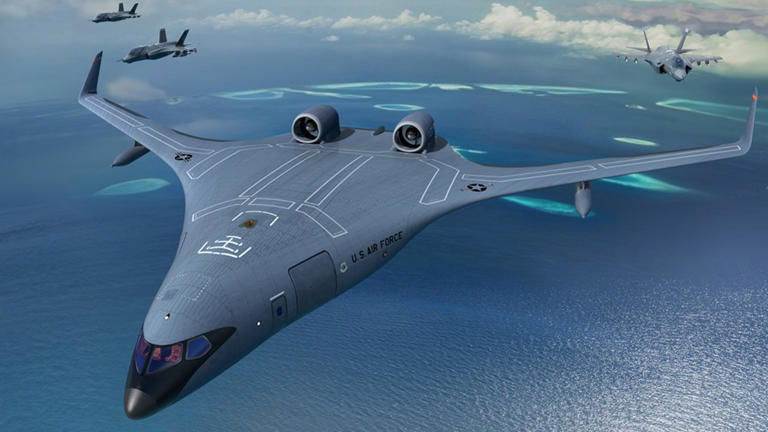
Blended-wing aircraft have a futuristic UFO look, like something out of a 1950s sci-fi flick. While the configuration was tried unsuccessfully by different air forces in the 1960s, at least three aerospace firms are now convinced these aircraft can compete with—and beat—conventional designs, mostly because of the blended-wing’s superior fuel efficiency.
A blended-wing jet, or “flying wing,” as some call the design, is different from other aircraft because it has no definite fuselage, instead blending the wing and fuselage into one construction.
...
Stryder50
Platinum Member
- Thread starter
- #106
The Interior of This Private Jumbo Jet Is an Art Deco Lover’s Paradise
Elaborate sunburst patterns, black-gold marble walls in the bathroom, and handmade silver antique mirrors give this ACJ319neo a one-of-a-kind interior.

The Interior of This Private Jumbo Jet Is an Art Deco Lover’s Paradise
Elaborate sunburst patterns, black-gold marble walls in the bathroom, and handmade silver antique mirrors give this ACJ319neo a one-of-a-kind interior.
Stryder50
Platinum Member
- Thread starter
- #107
The Tragic Tale Of How NASA Space Planes Ended Up In Someone’s Backyard
The craft were once seen as the future of cheaper, faster space access. Since then they have been reduced to backyard junk that nobody wants to claim.
(X-34)
:extract_focal()/https%3A%2F%2Fpocket-syndicated-images.s3.amazonaws.com%2Farticles%2F8499%2F1683671919_asdv2vv.jpg)
The Tragic Tale Of How NASA Space Planes Ended Up In Someoneâs Backyard
The craft were once seen as the future of cheaper, faster space access. Since then they have been reduced to backyard junk that nobody wants to claim.
 getpocket.com
getpocket.com
:extract_focal()/https%3A%2F%2Fpocket-syndicated-images.s3.amazonaws.com%2Farticles%2F8499%2F1683671919_asdv2vv.jpg)
The Tragic Tale Of How NASA Space Planes Ended Up In Someoneâs Backyard
The craft were once seen as the future of cheaper, faster space access. Since then they have been reduced to backyard junk that nobody wants to claim.
Stryder50
Platinum Member
- Thread starter
- #108
A Deep-Dive Into Boeing’s Militarized 737: The P-8 Poseidon
...According to Fi-Aeroweb, the P-8 conducted its first flight on April 25th, 2009. Full-scale testing of the airframe would then continue until January 2011. Months later, on July 7th, 2011, the first production aircraft made its initial flight and was delivered to the US Navy on March 4th, 2012. By January 3rd, 2014, the type was approved for Full Rate Production (FRP).
Based on the popular Boeing 737 commercial aircraft platform, the jet has the fuselage of a 737-800 but sports broader wings. The aircraft is powered by a pair of CFM International CFM56-7B high-bypass turbofan engines. As the US planemaker highlights, the P-8 shares 86% commonality with the commercial 737NG, "providing enormous supply chain economies of scale in production and support."
For aviation enthusiasts new to this militarized 737 variant, there can be some confusion around the naming. Interestingly, P-8 and P-8A are oftentimes used interchangeably, without much explanation on what the "A" might stand for. According to Boeing, the P-8 has two variants: The P-8I and the P-8A. The P-8I is only flown by the Indian Navy while the P-8A Poseidon flown by the US Navy, the UK's Royal Air Force, the Royal Australian Air Force, the Royal Norwegian Air Force and Royal New Zealand Air Force. If Boeing gets its way, the Royal Canadian Air Force will eventually be operating these jets, but this is a topic we'll discuss further down in this piece.
...
The P-8 Poseidon is the replacement of the Lockheed P-3 Orion ASW/Maritime Patrol aircraft.
Stryder50
Platinum Member
- Thread starter
- #109
For fans of warbirds and heavy metal, another site to bookmark;
Vintage Aviation News
 warbirdsnews.com
warbirdsnews.com
 warbirdsnews.com
warbirdsnews.com
 warbirdsnews.com
warbirdsnews.com
Vintage Aviation News
Home | Vintage Aviation News
Warbirds News | Vintage Aviation News
The latest news about Warbirds, classic aircraft,classic jets, restored airplanes
Newsreel Collection Possible Foundation for New South Carolina WWII Museum
University of South Carolina Newsreel collection proposed as base for a new WWII museum
Stryder50
Platinum Member
- Thread starter
- #111
The Only Man Who Flew Both The F-22 And The YF-23 On Why The YF-23 Lost
Test Pilot Paul Metz gives an in-depth brief on the YF-23 and the Advanced Tactical Fighter program, including his thoughts on why the F-22 won.
:extract_focal()/https%3A%2F%2Fpocket-syndicated-images.s3.amazonaws.com%2Farticles%2F8146%2F1660609283_62fad5597c792.png)
The Only Man Who Flew Both The F-22 And The YF-23 On Why The YF-23 Lost
Test Pilot Paul Metz gives an in-depth brief on the YF-23 and the Advanced Tactical Fighter program, including his thoughts on why the F-22 won.
 getpocket.com
getpocket.com
:extract_focal()/https%3A%2F%2Fpocket-syndicated-images.s3.amazonaws.com%2Farticles%2F8146%2F1660609283_62fad5597c792.png)
The Only Man Who Flew Both The F-22 And The YF-23 On Why The YF-23 Lost
Test Pilot Paul Metz gives an in-depth brief on the YF-23 and the Advanced Tactical Fighter program, including his thoughts on why the F-22 won.
Stryder50
Platinum Member
- Thread starter
- #113
Technically not a comprehensive list, and the types shown are more; "Types-Designs" rather than first production models of (though there may be a couple in collectible status that still fly). Still, worth a look as to how if you make something good, it can endure.
Some of:
A couple others that come ready to mind, older than those on the list above;
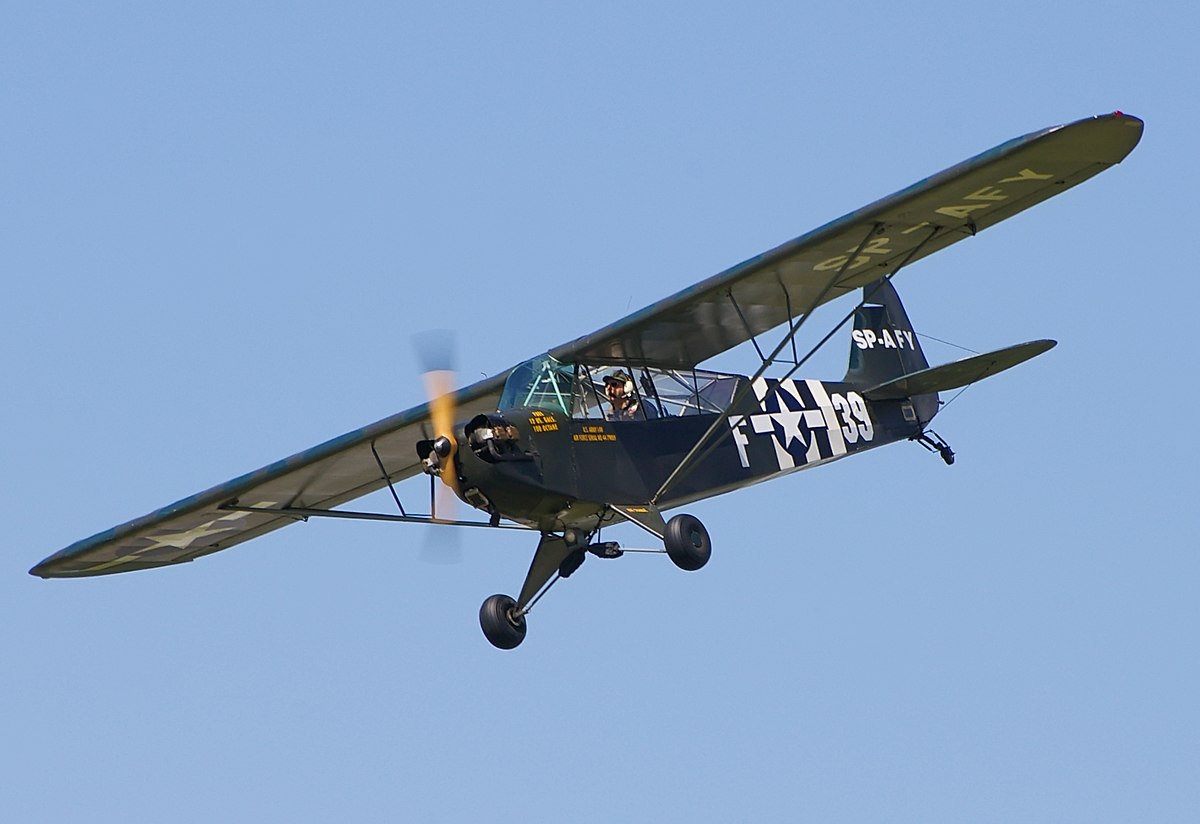
 en.wikipedia.org
en.wikipedia.org
Some of:
The 10 Oldest Aircraft That Are Still In Service Today
A couple others that come ready to mind, older than those on the list above;
Piper J-3 Cub

Piper J-3 Cub - Wikipedia
Douglas DC-3
Douglas DC-3 - Wikipedia
Last edited:
Stryder50
Platinum Member
- Thread starter
- #114
Placed in another thread, but will be appreciated here more;
Consider the case of "Glacier Girl", a World War Two USAAF P-38 fighter, crash-landed on a Greenland glacier in 1942, recoverd from under 268 feet of snow and ice, and now in restored, flying condition.
...
On 15 July 1942, due to poor weather and limited visibility, six P-38 fighters of 94th Fighter Squadron/1st FG and two B-17 bombers of a bombardment squadron were forced to return to Greenland en route to the British Isles during Operation Bolero and made emergency landings on the ice field. All the crew members were subsequently rescued, but Glacier Girl, along with the unit's five other fighters and the two B-17s, were eventually buried under 268 feet (82 m) of snow and ice that built up over the ensuing decades.

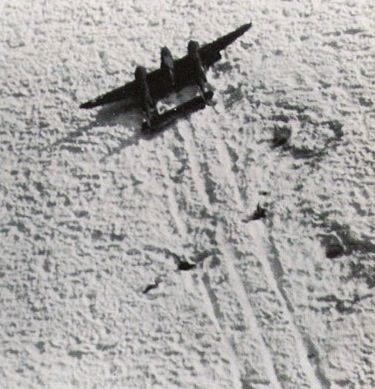
...
Fifty years later, in 1992, the plane was brought to the surface by members of the Greenland Expedition Society after years of searching and excavation. The aircraft was eventually transported to Middlesboro, Kentucky, where it was restored to flying condition.[2] The excavation of Glacier Girl was documented in an episode of The History Channel's Mega Movers series, titled "Extreme Aircraft Recovery".
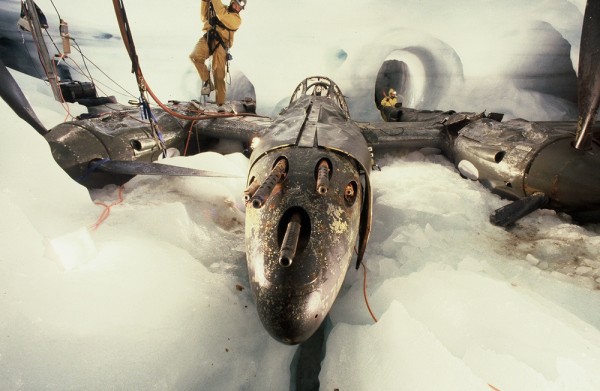
https://www.warhistoryonline.com/military-vehicle-news/the-amazing-recovery-restoration-of-the-p-38-glacier-girl.html?firefox=1&Exc_D_LessThanPoint002_p1=1
The Lightning returned to the air in October 2002.[3]
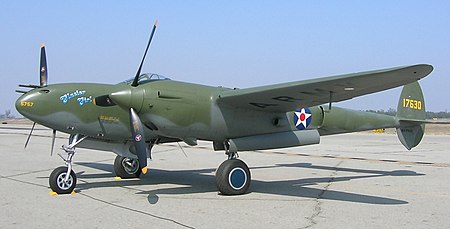
...

Glacier Girl - Wikipedia
............
IIRC, it takes about 10 inches of snow to make one inch of ice. Either way, buried under 268 feet in span of fifty years when the planet isn't going through extreme conditions moving toward (or away from?) and Ice Age would suggest how quick weather~climate can change. Especially if all the variables align the 'right' way.
That depth, 268 feet, is about 27 stories in length (height).
Consider the case of "Glacier Girl", a World War Two USAAF P-38 fighter, crash-landed on a Greenland glacier in 1942, recoverd from under 268 feet of snow and ice, and now in restored, flying condition.
...
On 15 July 1942, due to poor weather and limited visibility, six P-38 fighters of 94th Fighter Squadron/1st FG and two B-17 bombers of a bombardment squadron were forced to return to Greenland en route to the British Isles during Operation Bolero and made emergency landings on the ice field. All the crew members were subsequently rescued, but Glacier Girl, along with the unit's five other fighters and the two B-17s, were eventually buried under 268 feet (82 m) of snow and ice that built up over the ensuing decades.


...
Fifty years later, in 1992, the plane was brought to the surface by members of the Greenland Expedition Society after years of searching and excavation. The aircraft was eventually transported to Middlesboro, Kentucky, where it was restored to flying condition.[2] The excavation of Glacier Girl was documented in an episode of The History Channel's Mega Movers series, titled "Extreme Aircraft Recovery".

https://www.warhistoryonline.com/military-vehicle-news/the-amazing-recovery-restoration-of-the-p-38-glacier-girl.html?firefox=1&Exc_D_LessThanPoint002_p1=1
The Lightning returned to the air in October 2002.[3]

...

Glacier Girl - Wikipedia
 en.wikipedia.org
en.wikipedia.org
Glacier Girl: Recovery | P-38 Assn
 p38assn.org
p38assn.org

............
IIRC, it takes about 10 inches of snow to make one inch of ice. Either way, buried under 268 feet in span of fifty years when the planet isn't going through extreme conditions moving toward (or away from?) and Ice Age would suggest how quick weather~climate can change. Especially if all the variables align the 'right' way.
That depth, 268 feet, is about 27 stories in length (height).
Glacier Girl survives its own ice age
P-38F Lightning — Lewis Air Legends
Last edited:
Stryder50
Platinum Member
- Thread starter
- #115
How the Boeing 747 Changed the Way Airplanes Are Designed
AD looks back on how the “Queen of the Skies” became the most famous plane in the world.

:extract_focal()/https%3A%2F%2Fpocket-syndicated-images.s3.amazonaws.com%2Farticles%2F8607%2F1687206287_Screenshot2023-06-19at12.52.07PM.png)
How the Boeing 747 Changed the Way Airplanes Are Designed
AD looks back on how the “Queen of the Skies” became the most famous plane in the world.
 getpocket.com
getpocket.com

:extract_focal()/https%3A%2F%2Fpocket-syndicated-images.s3.amazonaws.com%2Farticles%2F8607%2F1687206287_Screenshot2023-06-19at12.52.07PM.png)
How the Boeing 747 Changed the Way Airplanes Are Designed
AD looks back on how the “Queen of the Skies” became the most famous plane in the world.
Stryder50
Platinum Member
Stryder50
Platinum Member
- Thread starter
- #117
A couple other aviation related threads on this forum. Worth a look;
WW II (World War Two) - CBI = China/Burma/India Theater of Operations; AVG = American Volunteer Group ~ "Flying Tigers" ~ Etc.
Greatest aircrat of WWII?
WW II (World War Two) - CBI = China/Burma/India Theater of Operations; AVG = American Volunteer Group ~ "Flying Tigers" ~ Etc.
Greatest aircrat of WWII?
Stryder50
Platinum Member
- Thread starter
- #118
Not a well researched piece and the author dosen't know much about Locheed's other interesting aircraft prior, but like their P-38, the Connie was another stylish looking (sexy) aircraft.
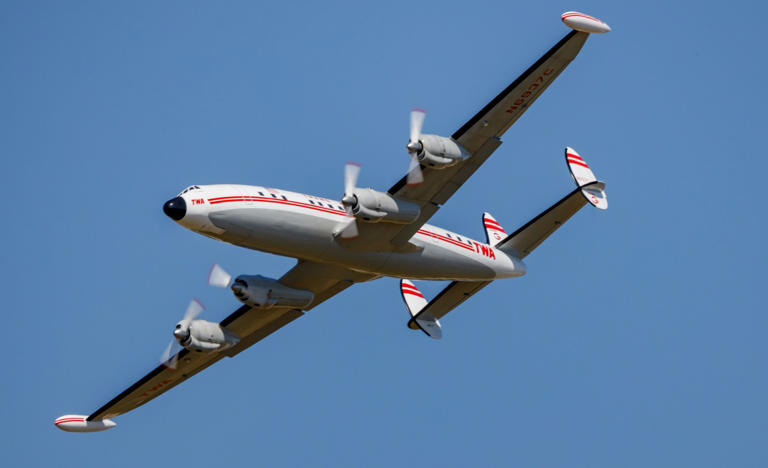
...
This aircraft was groundbreaking in so many ways. It put the otherwise small player Lockheed on the commercial aviation map and also played an important role in WWII. Aside from its unique design and attractive curves, the Constellation brought us something which has proved invaluable in the development of long-haul, comfortable flying, and that's the ability to fly at high altitudes, thanks to its pressurized cabin.
...
The development of the Constellation served to put Lockheed Martin on the map. A pretty small player in the aviation business, focusing on a few larger single-engine planes, Lockheed was vastly overshadowed by industry leader Douglas. Their DC-3 was leading the twin-engine market, and Douglas was already working on a four-engine aircraft, the DC-4E.
Lockheed had been designing the L-044 Excalibur, a four-engine version of the Model 14, as an answer to civil aviation's needs. Still, airlines demanded something bigger, faster, and more of a stride forward than what they were offering. Pan American World Airways came close to placing an order for the Excalibur when Lockheed abandoned the project after meeting Howard Hughes.
...
Lockheed had to be different to fulfill Hughes' requirements for something outstanding. This meant bringing to aviation a number of innovations not previously seen on passenger planes. The Constellation would have the first hydraulically boosted power controls, be faster than most WWII fighter jets, and feature a pressurized cabin to allow the plane to fly above most weather disturbances.
One other aircraft brought with it a pressurized cabin, and that was the Boeing 307. However, when it returned to commercial service after the war, its pressurization systems were disabled. For many years following its introduction with TWA in 1949, Connie was the only passenger aircraft that offered the pressurization needed to fly at high altitudes.
...
Connie brought with her a series of firsts. As the first commercial aircraft to fly above 12,500 feet, it took passengers out of the "air sickness" zone where the weather was more active. Settling into the jetstream at over 20,000 feet was more comfortable for passengers and less fuel-intensive, enabling the Constellation to operate the first nonstop coast-to-coast US commercial flights.
At the height of her popularity, airlines worldwide operated the Constellation. More than 800 aircraft were built in total, with operators including Pan Am, Air France, BOAC, KLM, Qantas, Lufthansa, and TAP Portugal. It was deployed on various long overseas routes and flew into unchartered territories.
...
...............
More information, details, and examples of the various models from Wiki, of course. And lots of pictures.

 en.wikipedia.org
en.wikipedia.org
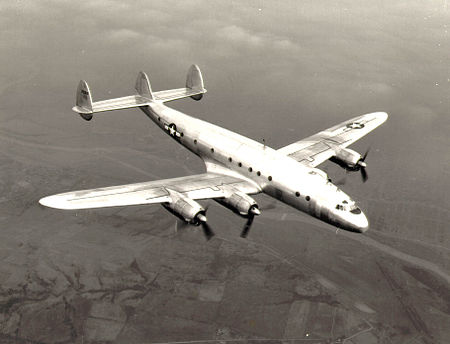

Another good site for info and reference;
The Lockheed Constellation - The Plane That Changed The World

...
This aircraft was groundbreaking in so many ways. It put the otherwise small player Lockheed on the commercial aviation map and also played an important role in WWII. Aside from its unique design and attractive curves, the Constellation brought us something which has proved invaluable in the development of long-haul, comfortable flying, and that's the ability to fly at high altitudes, thanks to its pressurized cabin.
...
The development of the Constellation served to put Lockheed Martin on the map. A pretty small player in the aviation business, focusing on a few larger single-engine planes, Lockheed was vastly overshadowed by industry leader Douglas. Their DC-3 was leading the twin-engine market, and Douglas was already working on a four-engine aircraft, the DC-4E.
Lockheed had been designing the L-044 Excalibur, a four-engine version of the Model 14, as an answer to civil aviation's needs. Still, airlines demanded something bigger, faster, and more of a stride forward than what they were offering. Pan American World Airways came close to placing an order for the Excalibur when Lockheed abandoned the project after meeting Howard Hughes.
...
Lockheed had to be different to fulfill Hughes' requirements for something outstanding. This meant bringing to aviation a number of innovations not previously seen on passenger planes. The Constellation would have the first hydraulically boosted power controls, be faster than most WWII fighter jets, and feature a pressurized cabin to allow the plane to fly above most weather disturbances.
One other aircraft brought with it a pressurized cabin, and that was the Boeing 307. However, when it returned to commercial service after the war, its pressurization systems were disabled. For many years following its introduction with TWA in 1949, Connie was the only passenger aircraft that offered the pressurization needed to fly at high altitudes.
...
Connie brought with her a series of firsts. As the first commercial aircraft to fly above 12,500 feet, it took passengers out of the "air sickness" zone where the weather was more active. Settling into the jetstream at over 20,000 feet was more comfortable for passengers and less fuel-intensive, enabling the Constellation to operate the first nonstop coast-to-coast US commercial flights.
At the height of her popularity, airlines worldwide operated the Constellation. More than 800 aircraft were built in total, with operators including Pan Am, Air France, BOAC, KLM, Qantas, Lufthansa, and TAP Portugal. It was deployed on various long overseas routes and flew into unchartered territories.
...
...............
More information, details, and examples of the various models from Wiki, of course. And lots of pictures.

Lockheed Constellation - Wikipedia


Another good site for info and reference;
Last edited:
Stryder50
Platinum Member
- Thread starter
- #119
B-47 Stratojet: America’s First Jet Bomber That Broke All the Rules
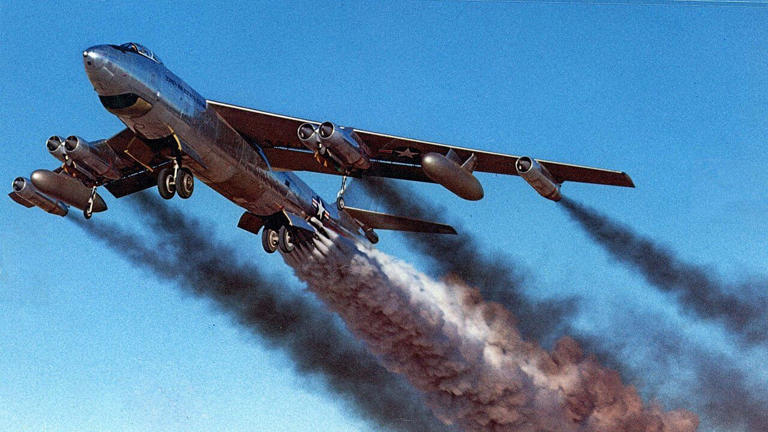
...
The B-47 was the first pure jet strategic bomber; yes, the B-36 did have four General Electric J47 turbojet engines, but they were outnumbered by six piston-driven engines. In the B-47's case (not to be confused with the P-47 Thunderbolt), we're talking six of those same J47 (appropriately but purely coincidentally) turbojets; a two-engine, pylon-mounted pod under each wing near the fuselage; and a single-engine pod further outboard. In addition, the Stratojet was the nation's first swept-wing multi-engine bomber. As noted by the Boeing fact sheet on the warbird:
"It represented a milestone in aviation history and a revolution in aircraft design. Every large jet aircraft today is a descendant of the B-47. Boeing engineers had envisioned a jet-powered plane as early as 1943. However, wind tunnel tests of straight-wing jet aircraft indicated that the straight wing did not use the full potential of jet-engine power … Another innovation pioneered on the B-47 was the concept of placing the engines in pods (nacelles) suspended under the wings."
The Stratojet made her maiden flight on December 17, 1947, and officially entered U.S. Air Force service in June 1951. Compared with the Peacemaker that preceded her, the Stratojet was relatively small in physical size and crew size. The plane typically hosted a crew of three: pilot, copilot — who operated the tail turret by remote control — and an observer who also served as navigator, bombardier, and radar operator. By contrast, the Peacemaker had a crew of 13! The B-47 was outright dwarfed by the B-36 in terms of wingspan and maximum takeoff weight: the former had a wingspan of 116 feet (35.36 meters) and a max takeoff weight of 221,000 pounds (100,244 kilograms) including a 25,000-pound (11,340-kilogram) bomb load; for the latter, a 230-foot (70.1-meter) wingspan — which means that the B-36 still holds the title for the longest wingspan of any combat aircraft — and a max takeoff weight of 410,000 pounds (185,973 kilograms) including an 86,000-pound (39,009-kilogram) bomb load.
The area where the B-47 beat the B-36 by a country mile was speed (not surprising in light of that aforementioned pure jet factor): 607 mph (977 kph/527 knots) vs. 435 mph (700 kph/378 knots). Thus the B-47 became the backbone of the SAC medium-bomber fleet. Designed to drop nuclear weapons on the Soviet Union from high altitude, tactics were later adapted to use a fighter-type "bomb toss" technique at a low level, thus embodying the USAF tenet of "Flexibility is the key to airpower."
...
Similar threads
- Replies
- 22
- Views
- 3K
- Replies
- 4
- Views
- 1K
- Replies
- 11
- Views
- 1K
Latest Discussions
- Replies
- 220
- Views
- 2K
- Replies
- 0
- Views
- 1
- Replies
- 199
- Views
- 3K
Forum List
-
-
-
-
-
Political Satire 8039
-
-
-
-
-
-
-
-
-
-
-
-
-
-
-
-
-
-
-
ObamaCare 781
-
-
-
-
-
-
-
-
-
-
-
Member Usernotes 468
-
-
-
-
-
-
-
-
-
-
